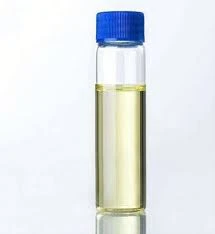Enhancing Water Purification through Coagulation and Flocculation Techniques in Treatment Processes
Coagulation and Flocculation in Water Treatment A Key to Clean Water
Water is an essential resource for life, and ensuring its quality is vital for public health and the environment. Among various processes utilized in water treatment, coagulation and flocculation play critical roles. These two methods work in conjunction to remove suspended solids, organic matter, and microorganisms, thereby significantly improving water clarity and safety.
Understanding Coagulation and Flocculation
Coagulation is the initial step in the treatment process, wherein chemical coagulants are added to raw water. Common coagulants include aluminum sulfate (alum), iron salts, and polyaluminum chloride. These chemicals serve to destabilize the fine particles suspended in water. Under ordinary circumstances, these particles have a negative charge and repel each other, preventing them from clumping together. When a coagulant is introduced, it neutralizes these charges, allowing the particles to come together to form larger aggregates known as flocs.
Flocculation follows coagulation and involves the gentle mixing of water to encourage the growth of these flocs. During flocculation, the established aggregates collide and link with one another, forming even larger particles that can be more easily removed from the water. This step is crucial, as larger flocs settle out of the water column or can be removed through filtration, helping to enhance the overall efficiency of the treatment process.
The Importance of Coagulation and Flocculation
The processes of coagulation and flocculation are vital for several reasons. Firstly, they significantly improve water quality by removing turbidity—cloudiness caused by suspended solids. High turbidity can harbor pathogens, including bacteria and viruses, which pose health risks. By effectively removing these contaminants, coagulation and flocculation help in producing safe drinking water.
coagulation and flocculation in water treatment

Secondly, the reduction of organic matter through these processes can prevent the formation of disinfection by-products (DBPs) when chlorine or other disinfectants are used. DBPs, which can form when chlorine reacts with organic materials in water, have been linked to various health concerns. By minimizing organic content early in the treatment process, water treatment facilities can decrease DBP concentrations, further safeguarding public health.
Furthermore, coagulation and flocculation are relatively low-cost methods compared to more advanced technologies such as membrane filtration and reverse osmosis. This cost-effectiveness makes these processes accessible for many municipalities and water treatment plants around the world, particularly in developing regions.
Factors Influencing Coagulation and Flocculation
Several factors influence the efficiency of coagulation and flocculation processes, including water temperature, pH, and the type and dosage of coagulants used. For example, colder temperatures can reduce the effectiveness of coagulants, necessitating adjustments in dosage. Additionally, maintaining the appropriate pH level is essential, as it affects the charge and solubility of the coagulants. Regular monitoring and optimization of these parameters are crucial to ensuring the success of the treatment process.
Conclusion
In conclusion, coagulation and flocculation are indispensable techniques in the realm of water treatment. Their ability to remove turbidity, pathogens, and organic materials plays a significant role in ensuring the delivery of safe drinking water. With the ongoing challenges posed by climate change, population growth, and water scarcity, these traditional methods remain vital components of contemporary water treatment strategies. Continued research and innovation in coagulant formulations and process optimization will further enhance the efficacy of these methods, ultimately contributing to the global effort towards sustainable water management and public health safety.
-
Pbtc Scale InhibitorPBTC: A Scale Protector for Industrial Water TreatmentNewsAug.05,2025
-
Organic Phosphonate: An Efficient Defender in the Field of Scale InhibitionNewsAug.05,2025
-
Hydrolyzed Polymaleic Anhydride: Green Pioneer in Scale Inhibition FieldNewsAug.05,2025
-
PAPEMP Polyamino Polyether Methylene Phosphonic Acid For SaleNewsAug.05,2025
-
Flocculant Water Treatment: A Pioneer in Purification in the Field of Water TreatmentNewsAug.05,2025
-
Benzyl Isothiazolinone: An Efficient and Broad-Spectrum Antibacterial Protective GuardNewsAug.05,2025





